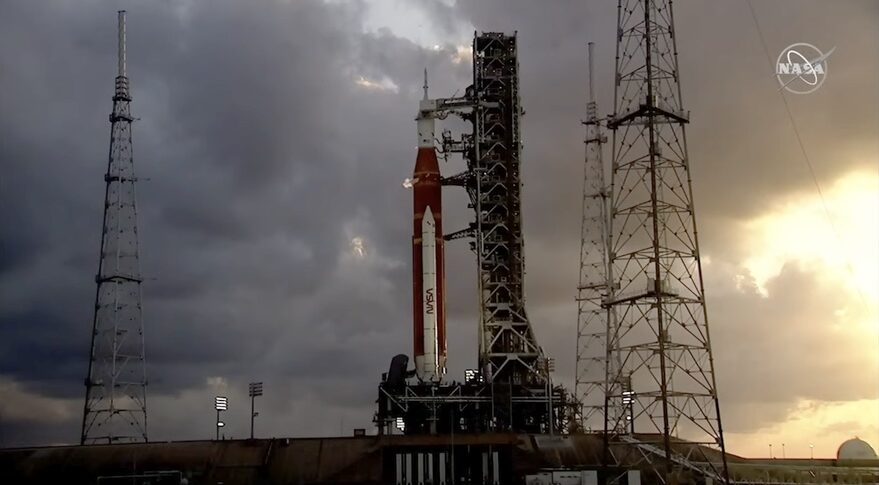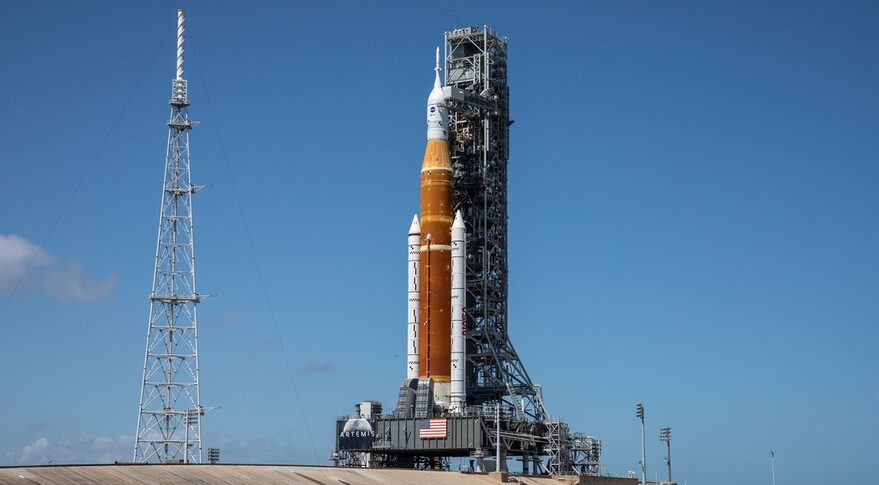NASA's Artemis 1 moon mission completed a crucial preflight milestone today (June 20), wrapping up a two-day set of tests known as a wet dress rehearsal.
Those tests included fueling up Artemis 1's huge Space Lakunch System (SLS) rocket and performing a simulated countdown that took the vehicle and NASA's Orion capsule through most of the progressions they would endure on launch day before engine ignition. The simulated countdown reached its conclusion at 7:37 p.m. EDT (2337 GMT), bringing an end to the wet dress.
Not everything went perfectly smoothly. The Artemis 1 team
noticed a hydrogen leak during fueling today, and they intentionally
"masked" data associated with the issue to let the countdown
continue. (During an actual launch countdown, such data would have raised red
flags, NASA officials said.) This change meant the countdown was halted at T-29
seconds before "liftoff," instead of T-9 seconds as originally
planned.
But that hiccup didn't dampen the enthusiasm of the Artemis 1
team much.
"It's a great day for our team," Charlie
Blackwell-Thompson, Artemis launch director with the Exploration Ground Systems
Program at NASA's Kennedy Space Center (KSC) in Florida, said during a webcast
of the wet dress just after it wrapped up. "Really proud of them working
through the loading operations and working through terminal count."
Ground teams at KSC will now likely spend the next few days preparing the Artemis 1 stack and mobile launch platform (MLP) for transport from Launch Pad 39B to the Vehicle Assembly Building (VAB), where technicians will analyze results from the series of tests.
The wet dress was the final major milestone that Artemis 1
needed to complete before launch. On the actual mission, the SLS rocket will
launch an uncrewed Orion on a roughly month-long journey to the moon and back.
Artemis 1 will be the first in a series of expeditions to the moon that NASA
hopes lay the foundation for a permanent human presence on the lunar surface —
one of the chief goals of the agency's Artemis program.


Comments
Post a Comment